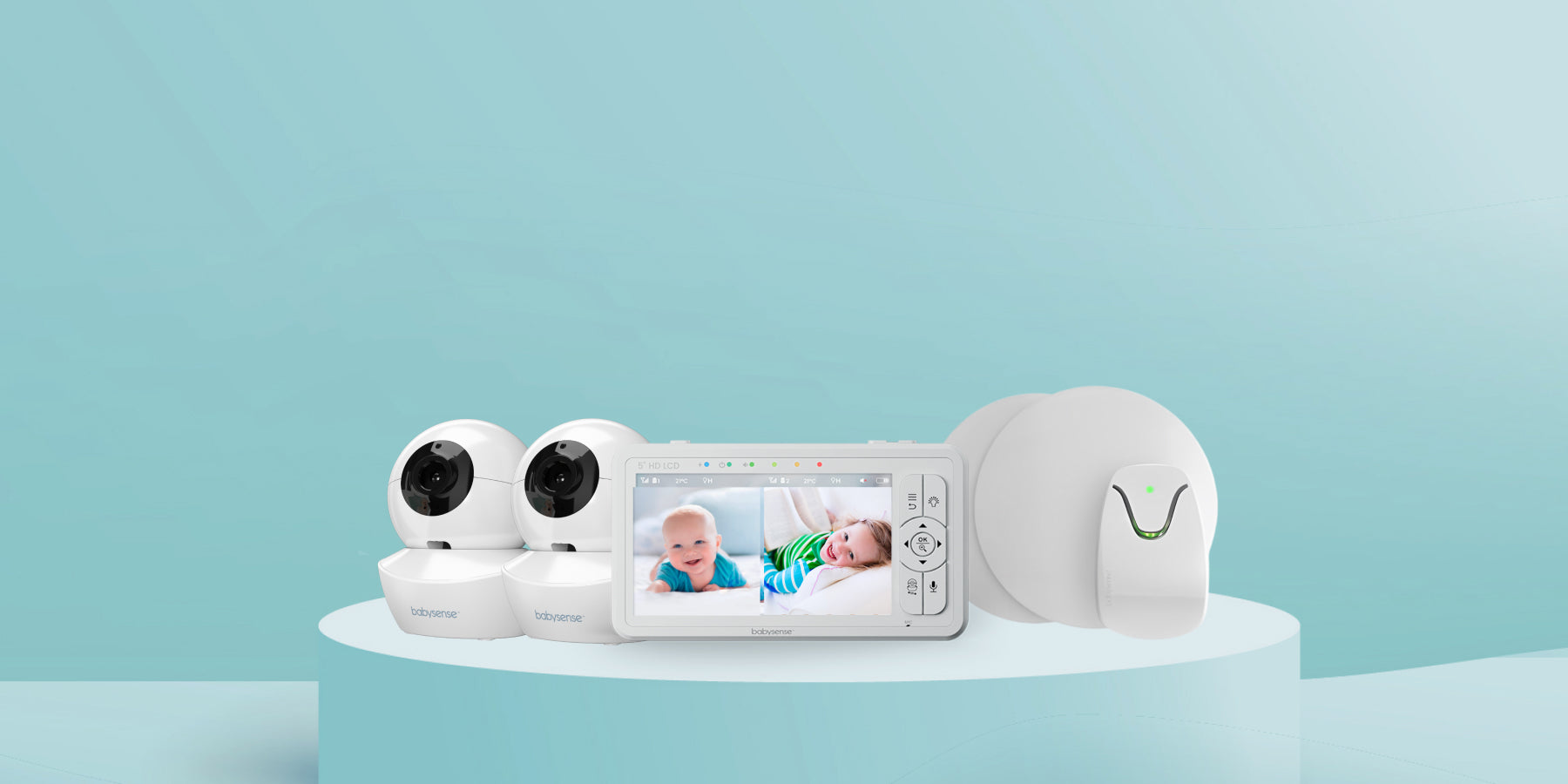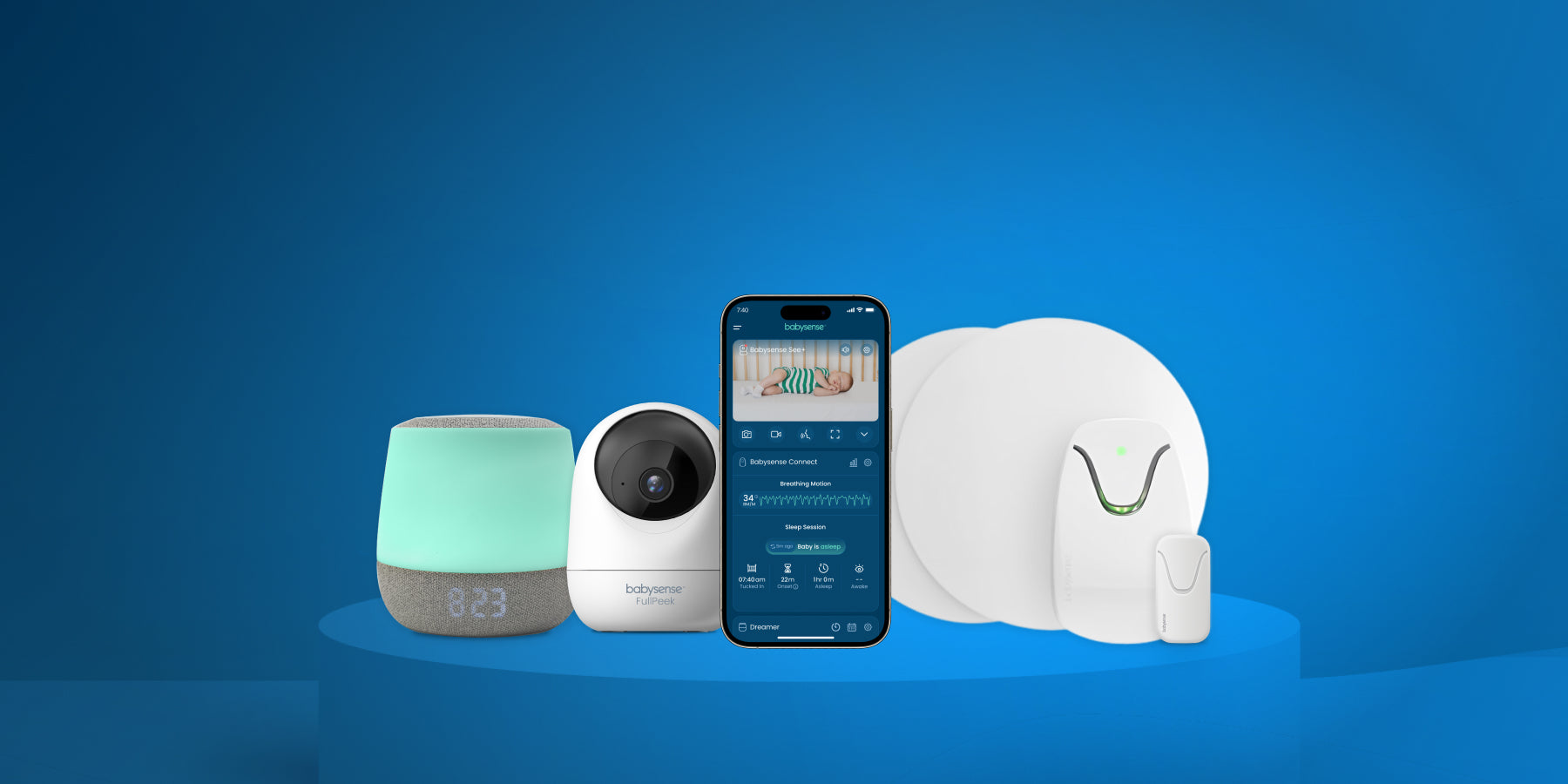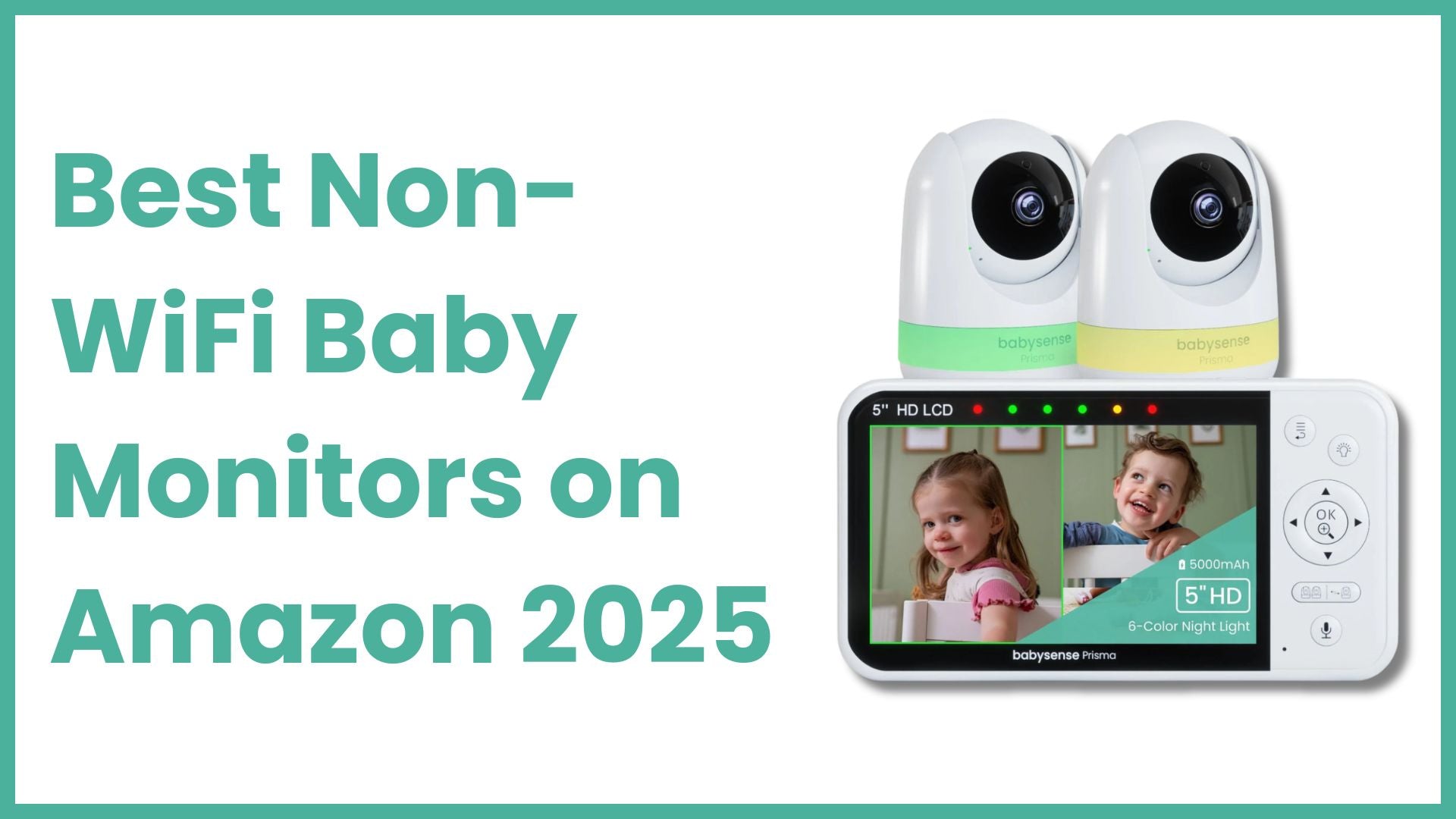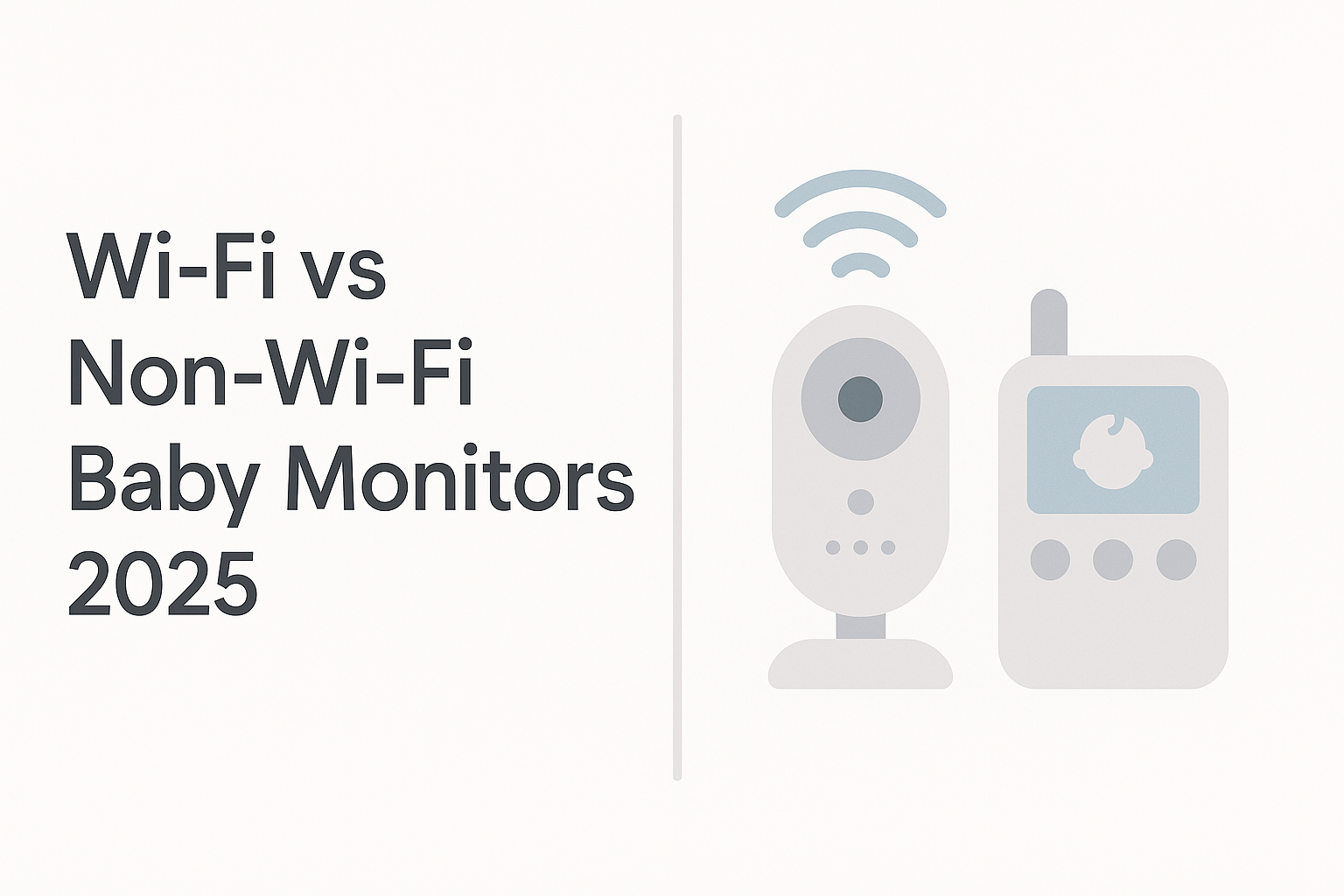Original lab test across 2.4 vs 5 GHz with a microwave running and a Bluetooth speaker streaming. Fast, scannable results and clear buying advice.
Key findings at a glance
- Baby monitor interference is worst on the 2.4 GHz band because it shares space with microwaves and Bluetooth. 5 GHz is less crowded but has shorter range through walls.
- In our apartment test, Babysense FullPeek 3MP had the most stable 2.4 GHz stream among Wi-Fi monitors when the microwave and a Bluetooth speaker were active.
- Dual-band Wi-Fi monitors improved when forced to 5 GHz, but range softened through two interior walls.
- Non-Wi-Fi video monitors were not affected by Wi-Fi congestion, but they trade away remote-viewing via phone apps.
Baby monitor interference can turn a peaceful nap check into a choppy, delayed feed. Apartments make it tougher because dozens of neighbors share the same airwaves. This hands-on test shows what happens when Wi-Fi gets crowded and the microwave and Bluetooth are humming.
How we tested
- Location: 2-bedroom, 900 sq ft apartment with 24 detectable neighbor networks.
- Router: Wi-Fi 6 dual-band, auto channel on, WPA2.
-
Scenarios:
- Baseline idle network.
- Congestion: 15 Mbps continuous traffic on 2.4 and 5 GHz, 25 neighbor SSIDs detected.
- Microwave on for 2 minutes during each 10-minute run.
- Bluetooth speaker streaming at 70 dB SPL.
- Metrics: video continuity percent, dropouts per 10 minutes, reconnection time after interference, and observer-measured delay.
- Devices: 7 Wi-Fi monitors across 2.4-only and dual-band types, plus one non-Wi-Fi digital video monitor used as a control.
- Runs: three 10-minute passes per scenario. Values below are medians.
Apartment interference results
| Monitor class | 2.4 GHz continuity under neighbor congestion | Microwave on: dropouts per 10 min (2.4 GHz) | Reconnection time after dropout (sec) | 5 GHz continuity under neighbor congestion | Notes |
|---|---|---|---|---|---|
| Babysense FullPeek 3MP (Wi-Fi) | 98% | 0.8 | 3.2 | N/A | Best 2.4 GHz stability in our Wi-Fi group. |
| 2.4-only Wi-Fi group average | 94% | 1.9 | 5.1 | N/A | More sensitive to microwave bursts than FullPeek. |
| Dual-band Wi-Fi group average (on 2.4) | 93% | 1.7 | 4.4 | 96% (on 5 GHz) | Better on 5 GHz but range drops through walls. |
| Non-Wi-Fi digital monitor (control) | 100% | 0.0 | 0.8 | N/A | Unaffected by Wi-Fi congestion. No phone app viewing. |
Notes: Continuity is the percent of frames delivered during congestion. Dropout means the stream froze or dropped to audio only for at least 1 second. Your network layout, router model, and distance will change results.
Why apartments are tough for baby monitors
2.4 GHz is crowded
Many home devices use 2.4 GHz, including Wi-Fi, Bluetooth, cordless phones, some baby monitors, and microwave ovens. This shared band increases interference risk in dense buildings.
5 GHz is cleaner but weaker through walls
5 GHz offers more bandwidth and less congestion, yet it has a shorter range and loses more signal through walls compared with 2.4 GHz.
Microwaves and Bluetooth add extra noise
Microwave ovens can reduce Wi-Fi performance when they operate near 2.4 GHz, which is noticeable in small kitchens near the router. Bluetooth also uses 2.4 GHz and hops between channels to avoid interference, but it can still collide with Wi-Fi traffic at close range.
For a quick at-home check, move routers away from other wireless devices and try different Wi-Fi channels to reduce interference.
What this means for your setup
- If you prefer Wi-Fi monitors: Place the router 6 to 10 feet from the microwave and 3 to 6 feet from Bluetooth speakers. Favor clear line of sight to the nursery when possible.
- Stuck on 2.4 GHz: Pick models that stay stable under noise and keep your router on channels 1, 6, or 11 to reduce overlap.
- Have dual-band: If the monitor supports 5 GHz, create separate 2.4 and 5 GHz SSIDs so you can pick the cleaner band.
- Want zero Wi-Fi dependency: Consider a closed-system non-Wi-Fi monitor for rock-solid links, then add a Wi-Fi model for remote check-ins when you leave home.
More deep dives from our team: Baby monitor interference explained, How to secure a Wi-Fi baby monitor, Wi-Fi vs non-Wi-Fi monitors, our Best Baby Monitor 2025 guide, and Where to put a baby monitor.
Featured pick: Babysense FullPeek 3MP for busy 2.4 GHz apartments
Looking for a non-Wi-Fi option for grandparents or travel where Wi-Fi is unpredictable? Explore our split-screen MaxView and HD-S2 systems. See the full lineup in Video Monitors.
External references
Bottom line
If you live in an apartment, plan for interference. Keep the router away from the kitchen, control your channels, and pick hardware that stays stable when 2.4 GHz gets busy. In our runs, Babysense FullPeek 3MP delivered reliable 2.4 GHz streaming among the Wi-Fi monitors we tested, while dual-band models did best when locked to 5 GHz at shorter range. Choose what fits your space and how you plan to watch.
FAQ
Does a microwave really affect baby monitor video?
Yes. Microwaves operate near 2.45 GHz, close to 2.4 GHz Wi-Fi. In small kitchens or galley apartments, you can see stutters while heating food if the router or monitor is nearby. Move the router and monitor farther away or use a 5 GHz-capable monitor if available.
Do Bluetooth speakers interfere with Wi-Fi baby monitors?
They can. Bluetooth also lives at 2.4 GHz. It hops frequencies to avoid interference, but if a speaker sits next to your router or camera, collisions can still occur. Keep a few feet of space.
Is 5 GHz always better for baby monitors?
Not always. 5 GHz is cleaner and faster but weakens more through walls. In large or multi-room apartments, 2.4 GHz can reach farther. Pick based on your layout and where you view from.
Where should I place my router and camera?
Aim for line of sight, elevated on a shelf, away from metal appliances, microwaves, and large speakers. For more tips, see Where to put a baby monitor.





